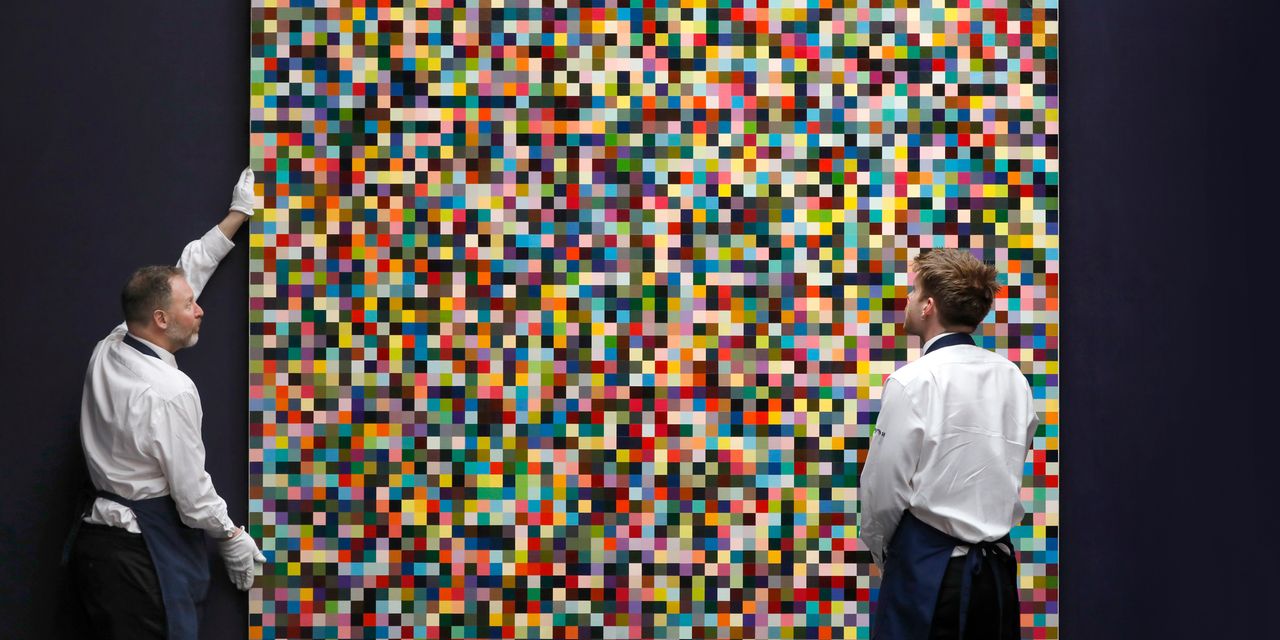The major auction houses will be selling a slew of high-value works in New York this month, including several artworks that, so far, are being offered for US$10 million or more without a guarantee to be purchased by the auction houses, or a collector or dealer.
A preliminary look at lots on offer at Christie’s, Sotheby’s, and Phillips beginning with Christie’s sale of 20th-century art on May 11, shows 25% or less of lots on offer have been guaranteed by each of the houses or by a third party. That percentage is certain to move higher in the days and even hours before the sales occur, but may not reach the same level of guaranteed property sold a year ago.
Last year, 42.4% of all lots on offer carried guarantees, up from 38% a year earlier, according to ArtTactic, a London art market data and analytics firm. At the London auctions in March, guaranteed sales calculated by prices achieved before fees fell 25.4% from a year ago,
Anders Petterson,
founder and CEO at ArtTactic, said in an email.
“This might be an indication that guarantors are weighing up the risk/benefits in light of higher interest rates, but [it’s] hard to say on the basis of one season,” Petterson said. “The [New York] sales will give us a better idea of whether this is a trend or a one-off.”
Inflation, a rise in interest rates to tamp it down, and market volatility—all of which has an impact on collectors—may be making auction houses more wary of putting up the capital to guarantee the works themselves.
Also, the cohort of collectors and dealers who often provide third-party guarantees have been “less keen to do them,” says Morgan Long, managing director at the Fine Art Group, a London art advisory. That’s possibly because this group is a small and “not necessarily growing pool,” and in the last round of sales, they ended up buying a lot. “Their appetite has waned,” Long says.
As some of these guarantors become less interested, that could slow growth at the top of the market, says Drew Watson, head of art services at Bank of America Private Bank.
That would have a profound effect. According to the latest Art Basel and UBS Global Art Market Report, the only sector of the public auction market to rise last year was of works priced above US$10 million.
There could be fewer guarantees simply because sellers aren’t looking for them. That’s because they are bringing top-quality works they know can sell, Watson says.
The market for works by Pablo Picasso is so robust, for example, that the downside protection of a guarantee isn’t as necessary. As of Wednesday, two works by Picasso offered in Christie’s 20th-century sale, did not carry guarantees: Femme assise au chapeau de paille (Marie-Thérèse), 1938, with an estimate up to US$30 million, and Nature morte a la fenetre, 1932, with an estimate on request in the region of US$40 million.
“You give up a portion of any upside if it sells above the guaranteed amount,” Watson says.
Instead of guaranteeing works, the auction houses may be winning consignments by offering “enhanced hammer” agreements, where a seller, for example, could be granted 100% of the price of a work when the auction hammer comes down without any fees subtracted, in addition to a significant portion of the buyer’s premium, Watson says.
A lot of the material that’s coming to market, especially from collectors who bought and held things for up to four decades, was purchased at a very low cost, so the additional return from an enhanced hammer agreement can help offset the capital gains taxes they’ll have to pay, he says.
Sometimes auction houses need to offer guarantees to win a competitive consignment, however. In those cases, “we have seen them subsequently de-risk and essentially sell that risk off to a third party,” Watson says.
A substantial amount of artwork coming to market this season is from major estates, put together by collectors who have since died, and not by those who have the discretion to sell when market conditions are optimal.
Christie’s, for instance, is offering the collection of the late Boston real-estate developer Gerald Fineberg, which has a total estimate across several sales of about US$270 million; none of the works in a May 17 dedicated evening sale—including high-ticket pieces from Picasso, Christopher Wool, and Gerhard Richter—are guaranteed. Sotheby’s May 16 evening sale of 15 lots from the collection of music executive Mo Ostin also is not guaranteed, including René Magritte’s L’Empire des lumières, 1951, which has a high estimate of US$55 million.
But often auction houses do provide significant guarantees to estates as leverage to win a consignment. At Christie’s, there are guarantees on works being offered from the collections of S.I. Newhouse and Paul Allen.
Collectors with the cash to spare may be the winners.
“This isn’t the material that attracts speculative buyers, it’s more blue chip—it’s great for us. This is good stuff,” Long says.
Read the full article here








